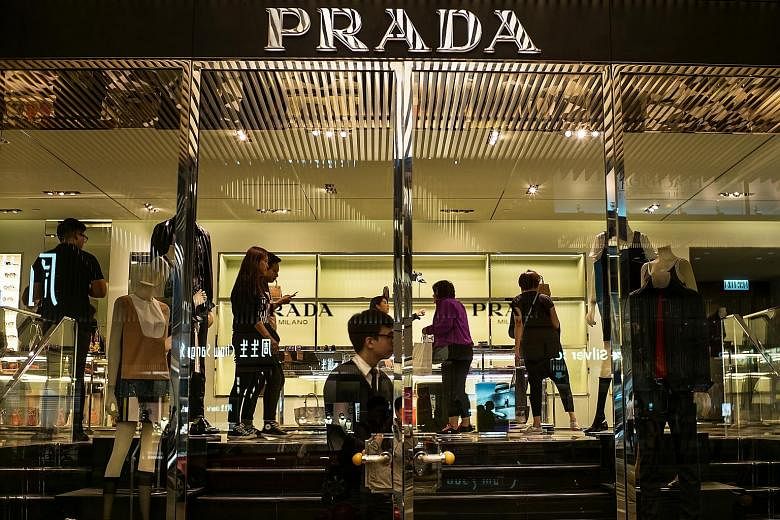HONG KONG • When Prada last week outlined plans to rekindle growth, marketing chief Stefano Cantino boasted that the Italian maker of luxury goods still "sets the trend in the industry". Unfortunately for Prada's investors, it is a leader in the wrong metrics.
The 103-year-old company, which started as a Milan shop selling travel trunks and leather bags, has been the worstperforming major luxury stock over the past three years.
Prada's mistake has been a strategy that emphasised adding stores in Asia without sufficient focus on refreshing its product lineup, especially at the lower end of the luxury price spectrum, said Bloomberg Intelligence analyst Deborah Aitken. As demand in Asia slowed and rivals revamped their handbag designs, co-chief executives Miuccia Prada and husband Patrizio Bertelli failed to adapt quickly enough, Ms Aitken said.
"Prada is suffering from high Asia dependency, over-ambition in store openings there and gaps in its portfolio for mid-priced leather goods," she added. "The transition to fix some of these issues could be lengthy."
A spokesman for Prada, whose brands include the Miu Miu fashion label and shoemakers Church's and Car Shoe, declined to comment.
Five years ago, the luxury goodsmaker was riding high, preparing to sell shares in what became Hong Kong's biggest initial public offering of 2011. Asia was driving Prada's growth and Mr Bertelli said he expected that trend to continue, pledging to open about 80 stores annually over the next three years, mostly in Asia.
Profit doubled between 2010 and 2012 as customers from New York to Nanjing snapped up Prada's bags and shoes. In March 2013, the stock peaked at more than twice its IPO price of HK$39.50. From 2011 to January this year, Prada almost doubled its store count to 618, with more than 40 per cent of its outlets now in Asia.
Mr Bertelli's bet on Asia turned out to be excessive. A clampdown on corruption crippled demand in China and Chinese consumers took fewer shopping junkets to Hong Kong. Prada's Asia sales fell 16 per cent last year, excluding currency swings, and profit for the 12 months through January slumped to the lowest level in five years. The company says the situation is so bad, it is impossible to make any forecast for this year. In February, the company's chief financial officer quit after more than a decade in the job, citing personal reasons.
While the slowdown in China, the strong dollar and the recent terror attacks in Europe have hurt all luxury goods-makers - even Hermes International SCA, one of the most resilient companies, is forecasting slower revenue growth - Prada's struggles stand out.
That is because it kept jacking up prices without offering shoppers a compelling reason for spending almost US$3,500 (S$4,700) on a purse - a stratospheric price level that put Prada in competition with brands such as Dior that are perceived as more exclusive, said Mr Mario Ortelli, an analyst at Sanford C. Bernstein.
Most of Prada's "new handbags are priced too high for core consumers", he added.
And the company ignored the Internet for too long: Miuccia Prada said as recently as 2013 that the Web "isn't right" for selling luxury, yet online sales of designer dresses and other wardrobe staples are growing more than twice as fast as the rest of the high-fashion industry.
Prada on Monday announced plans to address its shortcomings. The remedy includes introducing more handbags priced below €1,400 (S$2,130), getting on social media sites such as Snapchat and offering a larger range of goods online while curbing store expansion.
The announcement halted the slide in Prada's stock, but it will not be enough to restore profitability in the short term, said Mr Rogerio Fujimori, an analyst at RBC Capital Markets.
"2016 is shaping up to be another difficult year," he added. Any recovery "will be a gradual and uneven process".
BLOOMBERG

